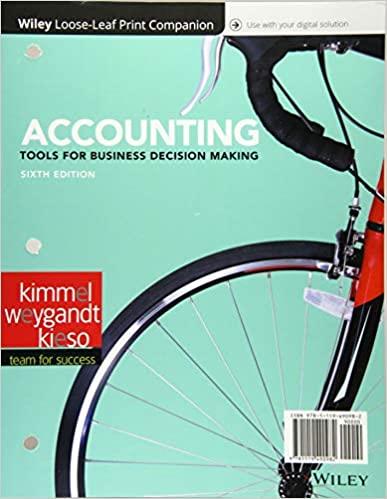Oxford Concrete Inc. (OCI) processes and distributes various types of cement. The company buys quarried local rock, limestone, and clay from around the world and mixes, blends, and packages the processed cement for resale. OCI offers a large variety of cement types that it sells in one-kilogram bags to local retailers for small do-it-yourself jobs. The major cost of the cement is raw materials. However, the company's predominantly automated mixing, blending, and packaging processes require a substantial amount of manufacturing overhead. The company uses relatively little direct labour. Some of OCI's cement mixtures are very popular and sell in large volumes, while a few of the recently introduced cement mixtures sell in very low volumes. OCI prices its cements at manufacturing cost plus a 25% markup, with some adjustments made to keep the company's prices competitive. For the coming year, OCI's budget includes estimated manufacturing overhead cost of $4,400,000. OCI assigns manufacturing overhead to products on the basis of direct labour-hours. The expected direct labour cost totals $1,200,000, which represents 100,000 hours of direct labour time. Based on the sales budget and expected raw materials costs, the company will purchase and use $10,000,000 of raw materials (mostly quarried rock, limestone, and clay) during the year. The expected costs for direct materials and direct labour for one-kilogram bags of two of the company's cement products appear below: Normal Portland High Sulphate Resistance $5.80 Direct materials $9.00 S0.24 $0.24 Direct labour (0.02 hours per bag) Normal Portland High Sulphate Resistance Direct materials $9.00 $5.80 Direct labour (0.02 hours per bag) $0.24 $0.24 OCI's controller believes that the company's traditional costing system may be providing misleading cost information. To determine whether this is the case, the controller has prepared an analysis of the year's Page 284 expected manufacturing overhead costs, as shown in the following table: Expected Activity for the Year Expected Cost for the Year Activity Cost Pool Activity Measure Purchase orders 4,000 orders $ 1,120,000 Purchasing Materials handling Quality control Number of setups 2,000 setups 386,000 Number of batches 1,000 batches 180,000 Mixing 2,090,000 Mixing-hours 190,000 mixing-hours Blending Blending-hours 384,000 64,000 blending-hours Packaging 240.000 Packaging-hours 48,000 packaging-hours $4,400,000 Total manufacturing overhead cost Data regarding the expected production of Normal Portland and High Sulphate Resistance cement mixes are presented below: Data regarding the expected production of Normal Portland and High Sulphate Resistance cement mixes are presented below: Normal Portland High Sulphate Resistance Expected sales 160,000 kilograms 8,000 kilograms Batch size 10,000 kilograms 500 kilograms Setups 4 per batch 4 per batch Purchase order size 20,000 kilograms 500 kilograms 3 mixing-hours 3 mixing-hours Mixing time per 100 kilograms Blending time per 100 kilograms Packaging time per 100 kilograms 1 blending-hour 1 blending-hour 0.6 packaging-hours 0.6 packaging-hours Required: 1. Using direct labour-hours as the base for assigning manufacturing overhead cost to products, do the following: a. Determine the predetermined overhead rate that will be used during the year. b. Determine the unit product cost of one kilogram of the Normal Portland cement and one kilogram of the High Sulphate Resistance cement. 2. Using ABC as the basis for assigning manufacturing overhead cost to products, do the following: a. Determine the total amount of manufacturing overhead cost assigned to the Normal Portland cement and to the High Sulphate Resistance cement for the year. b. Using the data developed in 2(a) above, compute the amount of manufacturing overhead cost per kilogram of the Normal Portland cement and the High Sulphate Resistance cement. Round all computations to the TurTUSE UUT SIZE ZUR Krograms JUU KUNT Mixing time per 100 kilograms 3 mixing-hours 3 mixing-hours Blending time per 100 kilograms 1 blending-hour 1 blending-hour Packaging time per 100 kilograms 0.6 packaging-hours 0.6 packaging-hours Required: 1. Using direct labour-hours as the base for assigning manufacturing overhead cost to products, do the following: a. Determine the predetermined overhead rate that will be used during the year. b. Determine the unit product cost of one kilogram of the Normal Portland cement and one kilogram of the High Sulphate Resistance cement. 2. Using ABC as the basis for assigning manufacturing overhead cost to products, do the following: a. Determine the total amount of manufacturing overhead cost assigned to the Normal Portland cement and to the High Sulphate Resistance cement for the year. b. Using the data developed in 2(a) above, compute the amount of manufacturing overhead cost per kilogram of the Normal Portland cement and the High Sulphate Resistance cement. Round all computations to the nearest whole cent. c. Determine the unit product cost of one kilogram of the Normal Portland cement and one kilogram of the High Sulphate Resistance cement. 3. Write a brief memo to the president of OCI explaining what you found in (1) and (2) above, and discuss the implications to the company of using direct labour as the base for assigning manufacturing overhead cost to products










